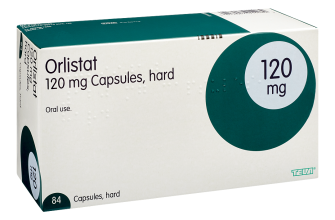Need quick relief from your COPD or asthma symptoms? Combivent, a combination inhaler containing ipratropium and albuterol, can help. This inhaler works by relaxing the muscles in your airways, opening them up and making it easier to breathe. Remember to always follow your doctor’s instructions for dosage and frequency.
Albuterol, a short-acting beta-agonist, acts rapidly to provide immediate relief from bronchospasm. Ipratropium, an anticholinergic, complements this by blocking the action of acetylcholine, a substance that constricts airways. This dual action offers a more comprehensive approach to managing airway obstruction.
Important Considerations: Before using Combivent, discuss any existing health conditions, especially heart problems or glaucoma, with your physician. This medication may cause side effects such as dry mouth, tremor, or nervousness. Inform your doctor if any side effects persist or worsen. Proper inhaler technique is crucial for maximizing efficacy; your doctor or pharmacist can demonstrate the correct method.
Disclaimer: This information is for educational purposes only and does not constitute medical advice. Always consult your doctor or pharmacist before starting any new medication or changing your current treatment plan.
- Combivent Inhaler: Understanding the Medication
- What is Combivent and How Does it Work?
- How it helps
- Important Considerations
- Using Combivent Inhaler Correctly: A Step-by-Step Guide
- Cleaning Your Inhaler
- Handling Possible Side Effects
- Potential Side Effects and Precautions of Combivent
- Combivent vs. Other Asthma/COPD Medications: When is it the Right Choice?
- Albuterol Only vs. Combivent
- Combivent vs. Long-Acting Bronchodilators (LABAs/LAMAs)
- Combivent and Inhaled Corticosteroids (ICS)
- Choosing the Right Medication
- Important Note:
Combivent Inhaler: Understanding the Medication
Combivent contains two medications: ipratropium and albuterol. Ipratropium is an anticholinergic, relaxing the muscles in your airways. Albuterol is a bronchodilator, opening your airways to improve breathing.
This inhaler treats and prevents bronchospasm, a tightening of the airways common in conditions like COPD and asthma. Always follow your doctor’s instructions regarding dosage and frequency of use.
Common side effects include dry mouth, headache, and throat irritation. More serious side effects, though less frequent, include increased heart rate and tremors. Report any unusual symptoms to your healthcare provider immediately.
Store Combivent at room temperature, away from moisture and heat. Never share your inhaler with others. Discard the inhaler properly when it’s empty, according to your pharmacist’s guidance.
Combivent provides relief from breathing difficulties, but it’s crucial to manage your underlying condition. This inhaler is a treatment tool, not a cure. Regular checkups with your doctor are necessary to monitor your progress and adjust treatment as needed.
Before using Combivent, inform your doctor about any allergies, current medications (including over-the-counter drugs), and existing health conditions, particularly heart problems or glaucoma. Pregnancy or breastfeeding should also be discussed with your doctor.
What is Combivent and How Does it Work?
Combivent is a combination inhaler containing two medications: ipratropium and albuterol. Ipratropium is an anticholinergic, meaning it blocks the action of acetylcholine, a chemical messenger that causes airway constriction. Albuterol, a beta-2 agonist, relaxes the muscles around your airways, widening them for easier breathing.
How it helps
By combining these two medications, Combivent provides bronchodilation–meaning it opens up your airways–in two different ways. This dual action offers faster and more effective relief from breathing problems associated with conditions like chronic obstructive pulmonary disease (COPD) and asthma. The inhaler delivers a fine mist directly to your lungs, providing quick symptom relief.
Important Considerations
Always follow your doctor’s instructions regarding dosage and frequency of use. Combivent is a rescue medication for sudden breathing difficulties; it is not a substitute for daily maintenance medications. Common side effects include dry mouth, headache, and nervousness. Report any unusual symptoms to your healthcare provider immediately. Proper inhaler technique is crucial for optimal medication delivery. Ask your pharmacist or doctor for guidance if needed.
Using Combivent Inhaler Correctly: A Step-by-Step Guide
First, check your prescription label and ensure you’re using the correct medication and dosage. Shake the inhaler well before each use. Next, remove the cap.
Breathe out completely. Hold the inhaler upright and place the mouthpiece between your teeth, closing your lips tightly around it.
Begin inhaling slowly and deeply. As you inhale, press down on the canister to release one puff of medication. Continue inhaling for 3-5 seconds, ensuring that the medication reaches your lungs. Hold your breath for about 10 seconds.
Cleaning Your Inhaler
Rinse your mouth with water after each use to prevent thrush. Once daily, remove the canister from the inhaler, wipe the mouthpiece with a damp cloth, and then let it air dry.
Handling Possible Side Effects
If you experience tremors, nervousness, or a rapid heartbeat, contact your doctor immediately. These are less common side effects but should be reported.
Always follow your doctor’s instructions for using Combivent and seek medical advice if you have any concerns or experience unexpected side effects.
Potential Side Effects and Precautions of Combivent
Combivent, while effective, can cause side effects. Knowing these potential issues helps you manage your treatment effectively.
Common side effects include:
- Tremors
- Nerve stimulation (nervousness)
- Headache
- Increased heart rate
- Muscle cramps
- Dry mouth
- Sore throat
- Cough
Less common, but more serious side effects require immediate medical attention:
- Chest pain
- Difficulty breathing
- Irregular heartbeat
- Severe allergic reactions (rash, hives, swelling, difficulty breathing)
- Seizures
Before using Combivent, inform your doctor about:
- Existing heart conditions
- High blood pressure
- Hyperthyroidism
- Diabetes
- Glaucoma
- Prostate enlargement
- Any allergies, especially to ipratropium bromide or albuterol
- Pregnancy or breastfeeding
Follow your doctor’s instructions carefully regarding dosage. Do not exceed the prescribed amount. If you experience any concerning side effects, contact your physician immediately.
This information is for guidance only and does not replace professional medical advice. Always consult your doctor or pharmacist for personalized information and treatment.
Combivent vs. Other Asthma/COPD Medications: When is it the Right Choice?
Combivent, a combination of albuterol and ipratropium, is best suited for patients experiencing acute bronchospasm associated with COPD or asthma. It provides rapid relief, unlike other medications that take longer to show effects.
Albuterol Only vs. Combivent
If you need only quick relief from wheezing or shortness of breath, albuterol alone might suffice. However, Combivent offers a broader approach by combining albuterol’s bronchodilating action with ipratropium, which blocks muscarinic receptors, further relaxing the airways. This dual action leads to greater bronchodilation than albuterol alone. Consider Combivent if albuterol isn’t offering sufficient relief.
Combivent vs. Long-Acting Bronchodilators (LABAs/LAMAs)
Combivent is for rescue, not daily maintenance. Long-acting bronchodilators like salmeterol (LABA) or tiotropium (LAMA) prevent bronchospasm, acting over longer periods. They are usually prescribed for daily use, complementing, not replacing, Combivent for quick relief.
Combivent and Inhaled Corticosteroids (ICS)
Inhaled corticosteroids like fluticasone reduce inflammation, addressing the underlying cause of COPD and asthma. They aren’t immediate relief medications. While Combivent tackles the immediate symptoms, ICS manages the underlying disease process. Doctors frequently prescribe both for a combined approach: ICS for long-term control and Combivent for immediate rescue.
Choosing the Right Medication
The optimal choice depends on your individual needs and the severity of your condition. Your doctor will assess your symptoms, lung function, and medical history to determine the most appropriate treatment plan. Always discuss any medication changes with your healthcare provider before making adjustments.
Important Note:
Combivent is not a first-line treatment for all asthma or COPD patients. Its use should be guided by a healthcare professional based on a thorough assessment of your health status.










